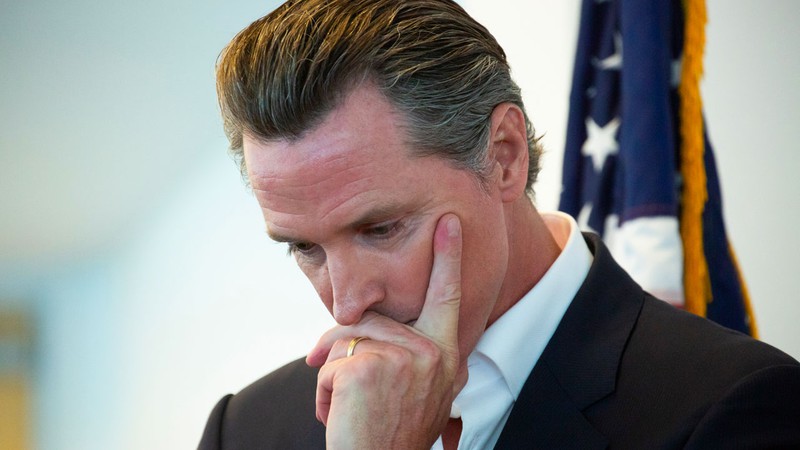Coming budget shortfall may claim some climate change programs as victims.

Gov. Gavin Newsom has proposed $6 billion in cuts to programs designed to fight climate change. Matt Gush Shutterstock
As historic levels of rainfall pounded both Northern and Southern California, causing at least 17 deaths and cutting off power to more than 540,000 homes, all due to a series of “atmospheric rivers” whose extreme intensity is likely due to climate change, Gov. Gavin Newsom announced on Jan. 10 that he planned to cut billions from the state’s efforts to combat climate change.
About $4.3 billion of the climate-related budget cuts will come out of proposed funding for zero-emissions vehicles, despite the fact that the state has set a goal of banning sales of gasoline-powered cars and trucks by 2035. But Newsom said that the goal, and other state climate goals, would not change due to the funding cuts.
In September of 2022, Newsom laid out, and the legislature approved, a $54 billion program of aggressive spending on climate measures. But in his budget plan announced Jan. 10, Newsom said that the state’s climate investment would be slashed to $48 billion over the next three years.
The cuts were part of a scaled-back budget plan that resulted from California’s projected $97 billion surplus disappearing and, in fact, becoming a $25 billion deficit by the end of 2023. The stunning budgetary reversal was caused by ongoing high inflation and the Federal Reserve’s decision to hike interest rates, as well as by continuing fluctuations in the stock market, the governor said, according to a Los Angeles Times report.
The slowdown in the technology sector has also played a significant role in the state’s revenue shortfall. The state relies on tech startups going public with their stock offerings, a move that creates large numbers of multimillionaires in a hurry—multimillionaires whose taxes are essential to a state that collects about half of its tax revenue from the top 1 percent of income earners.
In 2021, 206 California companies went public. In 2022 that total was fewer than 50, according to an Associated Press report.
Newsom downplayed the cuts to climate spending, saying that the $48 billion still on the table represents one of the world’s largest investments in climate change reduction. He said that the spending reductions in the proposed state budget could be covered by drawing funds from other sources, such as bond issues.
At the same time, Newsom’s budget proposal left the state’s “rainy day fund” untouched. The possibility of further financial setbacks for the state prevents dipping into the $35.6 billion worth of cash reserves, Newsom said.
“That makes us very mindful of the uncertainty of this next calendar year, and as a consequence of that we’re not touching the reserves because we have a wait-and-see approach to this budget,” the governor said on Jan. 10, adding that the reserve fund leaves California in a better position “than most other states to weather what’s to come.”
Newsom’s proposed budget is only the beginning of a months-long budget process. Following legislative debates and updated revenue projections, Newsom is set to release a revised budget proposal in May, leading up to the June 15 deadline when the legislature must pass a new state budget to prevent the state from running out of money.
Atmospheric rivers—massive streams of moisture in the sky—are made more intense by climate change because, as the planet becomes warmer, more surface water evaporates causing greater and greater buildups of atmospheric saturation. The more water an atmospheric river contains, the more water it dumps on the ground when it moves from the oceans to land.